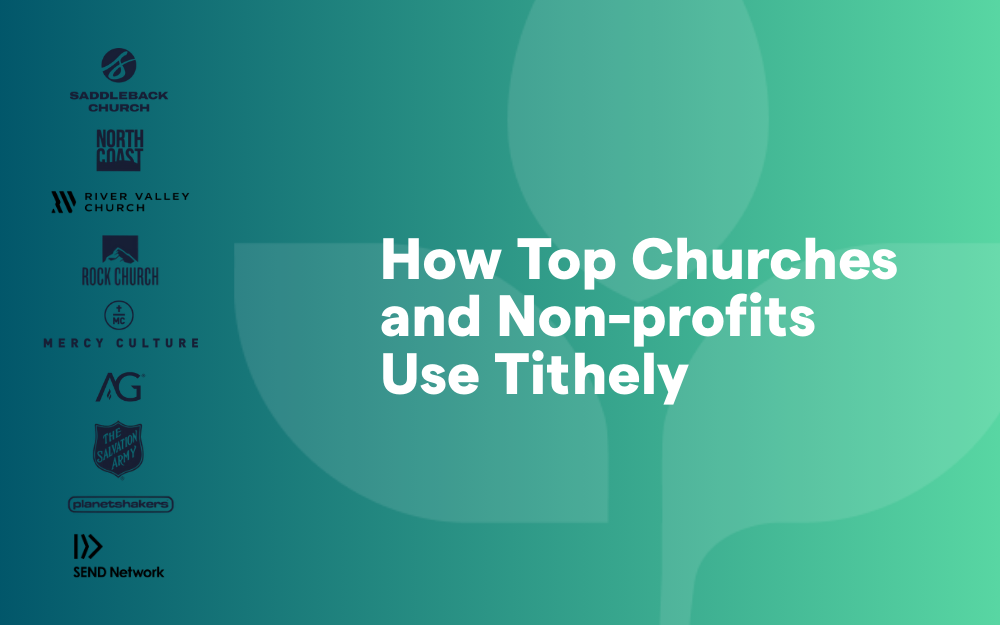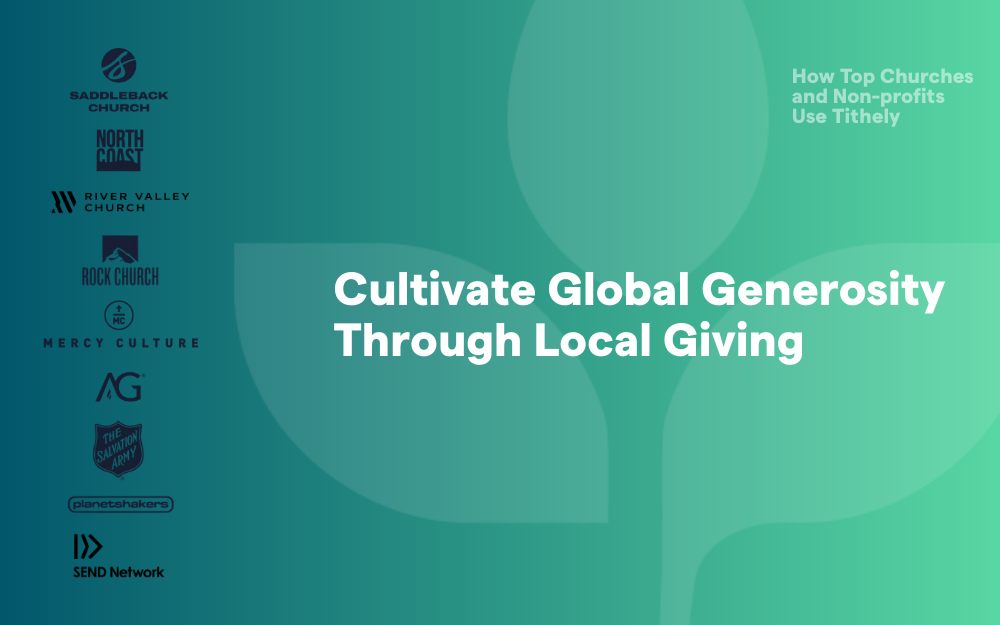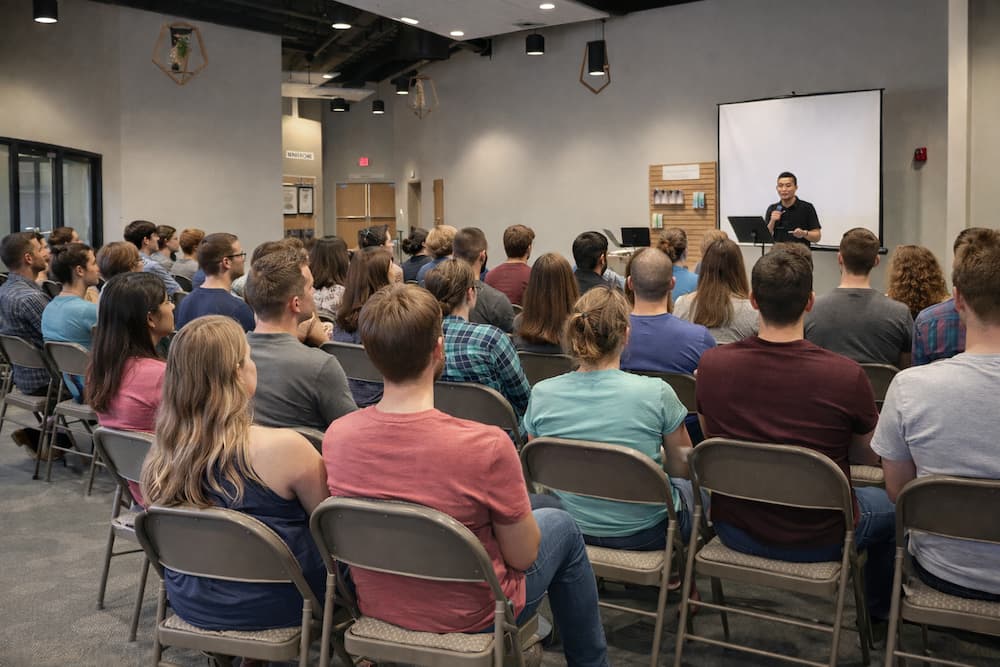Generosity Through the Ages: From the Widow’s Two Cents to David’s Temple Gift
In the modern world, with its relentless emphasis on the tangible and materialistic, the true essence of generosity often gets lost amidst discussions of numbers, assets, and percentages.

In the modern world, with its relentless emphasis on the tangible and materialistic, the true essence of generosity often gets lost amidst discussions of numbers, assets, and percentages.
To understand the profound depth of true generosity, one need not look any further than the Bible. The Holy Scriptures offer a gamut of lessons on giving, two of which stand out starkly in their contrast, yet carry a common message: the widow’s mite and David's 20 billion dollar gift for the construction of the temple.
The Widow's Offering: Mark 12:41-44
The poignant story of the widow's mite is narrated in the Gospel of Mark. Amidst the grandeur of the Temple in Jerusalem, where rich men poured their abundant treasures as offerings, a poor widow humbly approached and threw in two small copper coins, worth only a few cents. To the superficial observer, her contribution was meager, almost insignificant in comparison to the vast sums being offered by the wealthy. Yet, Jesus, in His divine wisdom, remarked: “Truly I tell you, this poor widow has put more into the treasury than all the others. They all gave out of their wealth; but she, out of her poverty, put in everything—all she had to live on.”
The widow's mite was not about the tangible value of her offering but the intangible sacrifice and love behind it. Her two cents represented everything she had – a total surrender, an unparalleled act of faith and trust in God.
David’s Temple Offering: 1 Chronicles 29
On the other end of the spectrum, we have the story of King David, a powerful ruler and a man after God's own heart. David, in his desire to build a house for God, amassed resources for the temple’s construction. He provided gold, silver, bronze, iron, wood, and precious stones, a sum which in today's value could well be around 20 billion dollars.
While this sum was vast and unparalleled, what stands out is David's sentiment behind the offering. He acknowledged, “But who am I, and what is my people, that we should be able thus to offer willingly? For all things come from you, and of your own have we given you.” David recognized that his ability to give, and indeed all he possessed, came from God. His gift was a testament to his faith, gratitude, and profound understanding of God's providence.
The Essence of Generosity
What do these two stories teach us about generosity?
Generosity is Relative: It is not the amount, but the intent and the sacrifice behind the gift that defines true generosity. The widow’s two cents were as significant, if not more, than David’s billions because both gave with a heart full of devotion.
Recognition of Source: Both the widow and David recognized that all they had came from God. Their offerings were expressions of gratitude, acknowledging God as the ultimate source of all wealth and abundance.
Generosity is a Matter of the Heart: In both stories, the emphasis is not on the tangible offering but the heart from which it emanates. The heart's condition, its motivations, and its alignment with divine principles determine the true value of any gift.
In today’s world, where success and generosity are often measured by tangible metrics and figures, these biblical accounts remind us to re-evaluate our understanding of giving. Whether it’s two cents or 20 billion dollars, true generosity is measured not by the size of the gift but by the size of the heart that gives it.
As we reflect on these stories, let us be inspired to cultivate a culture of generosity, understanding that true giving is an expression of love, faith, and gratitude. Whether we give from abundance like David or from our need like the widow, the essence remains the same: It is the heart, full of love and devotion, that makes any offering truly generous.
Note: The estimated value of David's offering as "20 billion dollars" is a contemporary approximation for illustrative purposes and might not be accurate.
Sign Up for Product Updates
In the modern world, with its relentless emphasis on the tangible and materialistic, the true essence of generosity often gets lost amidst discussions of numbers, assets, and percentages.
To understand the profound depth of true generosity, one need not look any further than the Bible. The Holy Scriptures offer a gamut of lessons on giving, two of which stand out starkly in their contrast, yet carry a common message: the widow’s mite and David's 20 billion dollar gift for the construction of the temple.
The Widow's Offering: Mark 12:41-44
The poignant story of the widow's mite is narrated in the Gospel of Mark. Amidst the grandeur of the Temple in Jerusalem, where rich men poured their abundant treasures as offerings, a poor widow humbly approached and threw in two small copper coins, worth only a few cents. To the superficial observer, her contribution was meager, almost insignificant in comparison to the vast sums being offered by the wealthy. Yet, Jesus, in His divine wisdom, remarked: “Truly I tell you, this poor widow has put more into the treasury than all the others. They all gave out of their wealth; but she, out of her poverty, put in everything—all she had to live on.”
The widow's mite was not about the tangible value of her offering but the intangible sacrifice and love behind it. Her two cents represented everything she had – a total surrender, an unparalleled act of faith and trust in God.
David’s Temple Offering: 1 Chronicles 29
On the other end of the spectrum, we have the story of King David, a powerful ruler and a man after God's own heart. David, in his desire to build a house for God, amassed resources for the temple’s construction. He provided gold, silver, bronze, iron, wood, and precious stones, a sum which in today's value could well be around 20 billion dollars.
While this sum was vast and unparalleled, what stands out is David's sentiment behind the offering. He acknowledged, “But who am I, and what is my people, that we should be able thus to offer willingly? For all things come from you, and of your own have we given you.” David recognized that his ability to give, and indeed all he possessed, came from God. His gift was a testament to his faith, gratitude, and profound understanding of God's providence.
The Essence of Generosity
What do these two stories teach us about generosity?
Generosity is Relative: It is not the amount, but the intent and the sacrifice behind the gift that defines true generosity. The widow’s two cents were as significant, if not more, than David’s billions because both gave with a heart full of devotion.
Recognition of Source: Both the widow and David recognized that all they had came from God. Their offerings were expressions of gratitude, acknowledging God as the ultimate source of all wealth and abundance.
Generosity is a Matter of the Heart: In both stories, the emphasis is not on the tangible offering but the heart from which it emanates. The heart's condition, its motivations, and its alignment with divine principles determine the true value of any gift.
In today’s world, where success and generosity are often measured by tangible metrics and figures, these biblical accounts remind us to re-evaluate our understanding of giving. Whether it’s two cents or 20 billion dollars, true generosity is measured not by the size of the gift but by the size of the heart that gives it.
As we reflect on these stories, let us be inspired to cultivate a culture of generosity, understanding that true giving is an expression of love, faith, and gratitude. Whether we give from abundance like David or from our need like the widow, the essence remains the same: It is the heart, full of love and devotion, that makes any offering truly generous.
Note: The estimated value of David's offering as "20 billion dollars" is a contemporary approximation for illustrative purposes and might not be accurate.
podcast transcript
In the modern world, with its relentless emphasis on the tangible and materialistic, the true essence of generosity often gets lost amidst discussions of numbers, assets, and percentages.
To understand the profound depth of true generosity, one need not look any further than the Bible. The Holy Scriptures offer a gamut of lessons on giving, two of which stand out starkly in their contrast, yet carry a common message: the widow’s mite and David's 20 billion dollar gift for the construction of the temple.
The Widow's Offering: Mark 12:41-44
The poignant story of the widow's mite is narrated in the Gospel of Mark. Amidst the grandeur of the Temple in Jerusalem, where rich men poured their abundant treasures as offerings, a poor widow humbly approached and threw in two small copper coins, worth only a few cents. To the superficial observer, her contribution was meager, almost insignificant in comparison to the vast sums being offered by the wealthy. Yet, Jesus, in His divine wisdom, remarked: “Truly I tell you, this poor widow has put more into the treasury than all the others. They all gave out of their wealth; but she, out of her poverty, put in everything—all she had to live on.”
The widow's mite was not about the tangible value of her offering but the intangible sacrifice and love behind it. Her two cents represented everything she had – a total surrender, an unparalleled act of faith and trust in God.
David’s Temple Offering: 1 Chronicles 29
On the other end of the spectrum, we have the story of King David, a powerful ruler and a man after God's own heart. David, in his desire to build a house for God, amassed resources for the temple’s construction. He provided gold, silver, bronze, iron, wood, and precious stones, a sum which in today's value could well be around 20 billion dollars.
While this sum was vast and unparalleled, what stands out is David's sentiment behind the offering. He acknowledged, “But who am I, and what is my people, that we should be able thus to offer willingly? For all things come from you, and of your own have we given you.” David recognized that his ability to give, and indeed all he possessed, came from God. His gift was a testament to his faith, gratitude, and profound understanding of God's providence.
The Essence of Generosity
What do these two stories teach us about generosity?
Generosity is Relative: It is not the amount, but the intent and the sacrifice behind the gift that defines true generosity. The widow’s two cents were as significant, if not more, than David’s billions because both gave with a heart full of devotion.
Recognition of Source: Both the widow and David recognized that all they had came from God. Their offerings were expressions of gratitude, acknowledging God as the ultimate source of all wealth and abundance.
Generosity is a Matter of the Heart: In both stories, the emphasis is not on the tangible offering but the heart from which it emanates. The heart's condition, its motivations, and its alignment with divine principles determine the true value of any gift.
In today’s world, where success and generosity are often measured by tangible metrics and figures, these biblical accounts remind us to re-evaluate our understanding of giving. Whether it’s two cents or 20 billion dollars, true generosity is measured not by the size of the gift but by the size of the heart that gives it.
As we reflect on these stories, let us be inspired to cultivate a culture of generosity, understanding that true giving is an expression of love, faith, and gratitude. Whether we give from abundance like David or from our need like the widow, the essence remains the same: It is the heart, full of love and devotion, that makes any offering truly generous.
Note: The estimated value of David's offering as "20 billion dollars" is a contemporary approximation for illustrative purposes and might not be accurate.
VIDEO transcript
In the modern world, with its relentless emphasis on the tangible and materialistic, the true essence of generosity often gets lost amidst discussions of numbers, assets, and percentages.
To understand the profound depth of true generosity, one need not look any further than the Bible. The Holy Scriptures offer a gamut of lessons on giving, two of which stand out starkly in their contrast, yet carry a common message: the widow’s mite and David's 20 billion dollar gift for the construction of the temple.
The Widow's Offering: Mark 12:41-44
The poignant story of the widow's mite is narrated in the Gospel of Mark. Amidst the grandeur of the Temple in Jerusalem, where rich men poured their abundant treasures as offerings, a poor widow humbly approached and threw in two small copper coins, worth only a few cents. To the superficial observer, her contribution was meager, almost insignificant in comparison to the vast sums being offered by the wealthy. Yet, Jesus, in His divine wisdom, remarked: “Truly I tell you, this poor widow has put more into the treasury than all the others. They all gave out of their wealth; but she, out of her poverty, put in everything—all she had to live on.”
The widow's mite was not about the tangible value of her offering but the intangible sacrifice and love behind it. Her two cents represented everything she had – a total surrender, an unparalleled act of faith and trust in God.
David’s Temple Offering: 1 Chronicles 29
On the other end of the spectrum, we have the story of King David, a powerful ruler and a man after God's own heart. David, in his desire to build a house for God, amassed resources for the temple’s construction. He provided gold, silver, bronze, iron, wood, and precious stones, a sum which in today's value could well be around 20 billion dollars.
While this sum was vast and unparalleled, what stands out is David's sentiment behind the offering. He acknowledged, “But who am I, and what is my people, that we should be able thus to offer willingly? For all things come from you, and of your own have we given you.” David recognized that his ability to give, and indeed all he possessed, came from God. His gift was a testament to his faith, gratitude, and profound understanding of God's providence.
The Essence of Generosity
What do these two stories teach us about generosity?
Generosity is Relative: It is not the amount, but the intent and the sacrifice behind the gift that defines true generosity. The widow’s two cents were as significant, if not more, than David’s billions because both gave with a heart full of devotion.
Recognition of Source: Both the widow and David recognized that all they had came from God. Their offerings were expressions of gratitude, acknowledging God as the ultimate source of all wealth and abundance.
Generosity is a Matter of the Heart: In both stories, the emphasis is not on the tangible offering but the heart from which it emanates. The heart's condition, its motivations, and its alignment with divine principles determine the true value of any gift.
In today’s world, where success and generosity are often measured by tangible metrics and figures, these biblical accounts remind us to re-evaluate our understanding of giving. Whether it’s two cents or 20 billion dollars, true generosity is measured not by the size of the gift but by the size of the heart that gives it.
As we reflect on these stories, let us be inspired to cultivate a culture of generosity, understanding that true giving is an expression of love, faith, and gratitude. Whether we give from abundance like David or from our need like the widow, the essence remains the same: It is the heart, full of love and devotion, that makes any offering truly generous.
Note: The estimated value of David's offering as "20 billion dollars" is a contemporary approximation for illustrative purposes and might not be accurate.




























